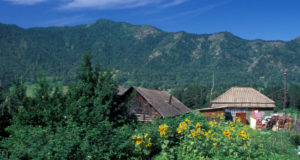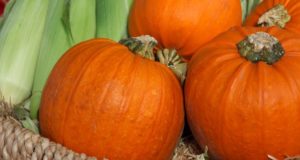|
Listen To The Article
|
 Southern Siberia – A recent article that first appeared in The Smithsonian and then Gizmodo, tells the fascinating story a family that went so far off the grid that they lived through World War II and most of the Cold War without knowing either had occurred.
Southern Siberia – A recent article that first appeared in The Smithsonian and then Gizmodo, tells the fascinating story a family that went so far off the grid that they lived through World War II and most of the Cold War without knowing either had occurred.
The Lykovs were a family of “Old Believers” who fled to deep taiga of the Sayan Mountains in Southern Siberia during the mid-1930s where they lived in total isolation until 1978. When Geologists exploring the Bolshoy Abakan River discovered the Lykovs they were virtually unaware of outside civilization.
This unusual family’s story finds its roots nearly 300 years before they were found. It was then that a schism in the Russian Orthodox Church, the Old Believers, who were opposed to church reforms, moved northward. As collectivism took hold after the turn of the century, the Lykov’s ancestors were pushed out of civilization as their farms were burned and property seized.
During the 1930s they lived with their fellow believers on a farm in the taiga until a dispute caused them to split from the community. Until 1945 their house could be found on local maps though visitors never made the trek into the wilderness. That year, a patrol appeared looking for deserters prompting the Lykovs to hastily flee and hide in the mountains for the next three decades.
With no contact with the outside world for the next 30 years, the family abided by the faith of the Old Believers. They supported themselves through healthy food from the land, hard work, and their devout spiritual life. They used the materials at hand to build root cellars, started fires with flints, grew their own vegetables and sewed their own clothes from the fabric they also made themselves.
It was a total family effort as everyone labored together to survive in the wild land. They lived off fishing, hunting and farming. They salted the fish and extracted fish oil. The Lykov brothers hunted elk using pits three meters long, wide and deep. The animals constituted the bulk of the Lykov’s protein food. Hunting deer simply involved chasing the animals to exhaustion until they fell down at which point they were finished off with a knife.
At first, there were six family members: the father Karp Iosifovich, the mother Akulina, their sons Dmitry and Savin and daughters Natalya and Agafya. As the years passed they hid deeper and deeper in the taiga to escape contact with potentially hostile people. In 1978, a group of geologists happened upon the family’s little house in the thick of the forest.
After surviving on their own through the times of Hitler and Stalin, oblivious to either, a series of newspaper articles in 1982 led the world to the Lykov’s doorstep. A map in the articles showed the whole world where to find them. People were moved by the story of forest hermits coming to know civilization and many came to visit them.
Though doctors found the family to be free of any health irregularities they found one hazard they could no longer avoid: contact with people turned out to be lethal for them. Three years after they were discovered, three Lykovs died within two months. The older children, having been born and having spent all of their lives in the taiga didn’t have the immunity that protects modern day people from infectious diseases. Savin, Dmitry and Natalya died one after another.
That fall, all the members of the family fell ill. Karp Iosipovich weathered the illness the best, probably because he lived among people for many years and had acquired the necessary immunity. Agafya fell ill too, but was young and healthy enough to overcome the disease. Karp Osipovich died after a later visit by geologists.
The legacy of these Old Believers who moved way off the grid lives on with Agafya. She now lives alone, living off the land she knows and surviving off agriculture and fishing. Her days and nights are spent with prayers and guarding against bears in the summer and wolves in the winter. Agafya refuses to move to civilization or receive a pension.
But Agafya Lykov has learned the need for community as well. These days, some of the locals occasionally bring her firewood, chickens and volunteer to help care for her house and garden.
 Off The Grid News Better Ideas For Off The Grid Living
Off The Grid News Better Ideas For Off The Grid Living



